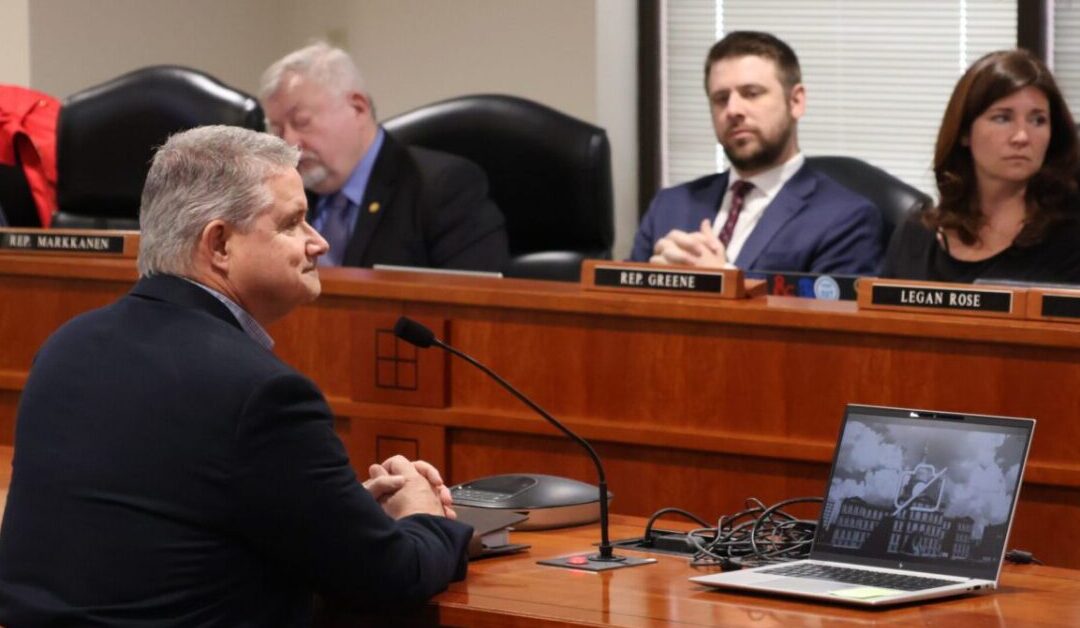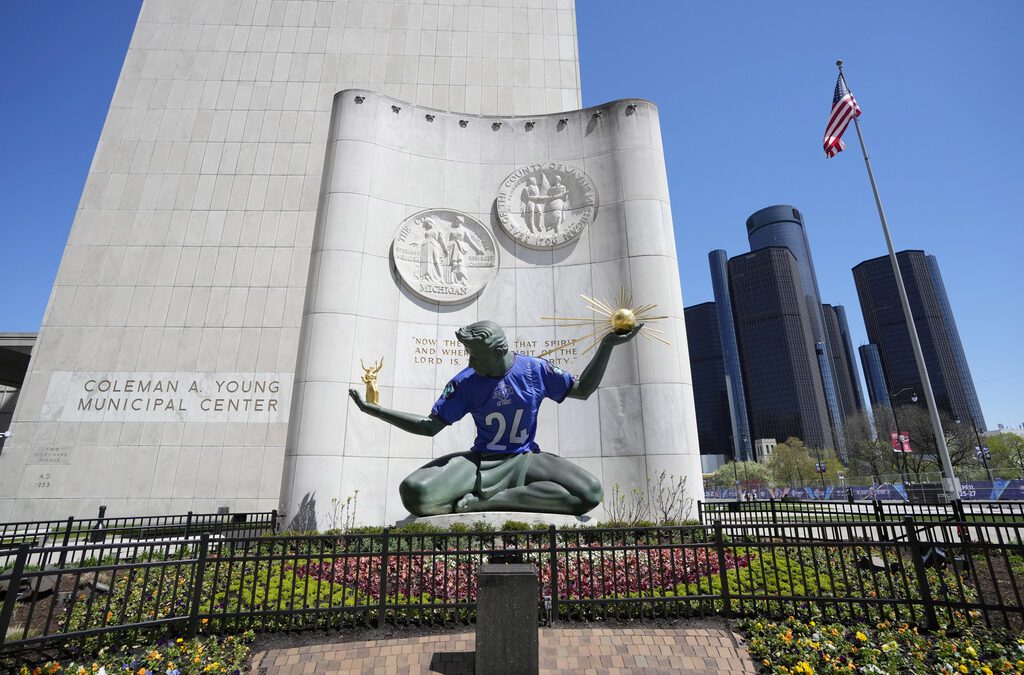MICHIGAN—It’s the night of the election. Polls have been closed for hours.
Why don’t Americans know the winners?
In 2020, President Donald Trump proclaimed that the lack of final results on election night could be an indicator of something nefarious and used it to assert without evidence that the election was stolen: “We don’t want them to find any more ballots at 4 o’clock in the morning and add them to the list,” he said.
In reality, however, results released on election night are unofficial and always incomplete. They inevitably change as more ballots are counted.
Unlike in many countries, elections in the US are highly decentralized, complex and feature long lists of races, from president and Congress all the way down to local measures and town council seats. Some states give local election offices several weeks before Election Day to process mailed ballots, including checking signatures and verifying ID information. In other states, that process can’t start until Election Day or shortly before, meaning those ballots might not get counted until the next day or even later.
Here’s why results are not always known the night of an election.
Should we know the winners before going to bed?
Not necessarily.
Republicans in particular have pointed to perceived delays in knowing results as a reason to be suspicious about the integrity of elections. But not knowing the winner on election night says nothing about the fairness of an election or the accuracy of results.
In Michigan, city and township clerks can only begin processing absentee ballots two days before the election—and they can’t count votes until Election Day because Republican lawmakers have ignored their requests to get a jumpstart on counting them. That will likely lead to delayed results, officials said.
Still, state elections officials said voters in Michigan can expect preliminary results to be ready within 24 hours of polls closing on Nov. 8. That means it may take until Wednesday night to see preliminary results, especially for races that are projected to be particularly close this year.
How do mail ballots affect the reporting of results?
Long before the COVID-19 pandemic, states were expanding the use of mail ballots and early in-person voting to reduce lines on Election Day and provide more flexibility to voters. Mail ballots are subject to various security checks, varying by state. Some require voter signatures or ID information to match their registration files, while others require witnesses or notaries to affirm a voter’s identity.
In most states, including Florida and Georgia, the process of validating mail ballots begins well ahead of Election Day—providing a huge advantage in reporting results quickly. That’s not the case in Michigan and few other political battleground states. This means most results being reported from these states on election night will only be from in-person voting on Election Day, or during the early voting period.
Once absentee votes are tallied, the election results could look significantly different.
“Counting votes and reporting the results take time,” said Leigh Chapman, acting secretary of state in Pennsylvania. “Election officials are focused on accuracy over speed.”
Why can’t we be like France?
A close Republican primary for US Senate in Pennsylvania last May triggered comparisons to the French presidential election, which had been held a few weeks earlier.
Trump, in a social media post two days after the Pennsylvania primary, questioned why it was taking so long to find out the winner: “France, same day all paper, had VERIFIED numbers in evening,” Trump wrote. “U.S. is a laughing stock on Elections.”
But in France there was only one contest on the ballot. Presidential and parliamentary elections are held on separate dates. In Pennsylvania, the US Senate GOP primary was just one of several contests being decided, including races for governor, attorney general, Congress and state legislature.
US elections also are not nationalized, but rather overseen by states and run by local officials at the county or even township level. The U.S. has some 10,000 jurisdictions charged with overseeing the voting process.
For presidential elections in France, the Ministry of Interior distributes election-related materials, including ballots, while local officials coordinate staffing of polling places. France also has a Constitutional Council that decides election-related complaints and announces results.
Noah Praetz, the former elections clerk in Cook County, Illinois, said it’s possible to have quick results, but the US has “decided to make voting accessible to everybody and let us vote on everything.” He noted that ballots in the US typically include dozens of offices in contrast to some countries where voters might simply back a party whose leadership then fills many of those positions.
In France, voters choose from lists of local candidates usually associated with a party. The candidate list gaining the most support will receive the most seats in the city and regional councils.
“It’s a fundamentally different view of democracy,” Praetz said.
In addition, voters in France can vote by proxy—designating someone else to vote for them if they are unable to cast a ballot in person on Election Day, which is not allowed in the US.
What other factors can slow results?
While most states require mail ballots to be received on or before Election Day, 19 states provide a grace period as long as ballots were sent through the mail by Election Day. Such ballots in California can be received up to seven days later.
Voters may not know the outcome of a close race for several days if a significant number of those ballots arrive at local election offices after Election Day.
This also can change results over time. If Democratic voters dominate mail voting while Republican voters largely cast ballots in person, this can mean that early results heavily favor a Republican candidate who then sees that lead slip away as the late-arriving mail ballots are counted.
Would hand counting help speed up the process?
No. Hand counting of all ballots happens primarily in small towns in the Northeast. For places with a lot of ballots, experts consider it to be more time-consuming and susceptible to human error. Hand tallies are used in post-election reviews to ensure accuracy of tabulator machines, but that usually involves only a sample of ballots and is done without the time pressure of trying to report results quickly.
Republican activists and candidates have been pushing for hand counts, based largely on conspiracy theories that voting systems were manipulated to steal the 2020 election. There is no evidence of widespread fraud or tampering of machines.
Hand counts would themselves also prolong the reporting of results, perhaps by several days.
Cobb County, Georgia, performed a hand tally ordered by the state after the 2020 election. It took hundreds of people five days to count the votes for president on roughly 397,000 ballots. A county election official estimated it would have taken 100 days to count every race on each ballot using the same procedures.
‘Gander Editor Kyle Kaminski contributed to this report.
Politics

Investigator says Trump, allies were uncharged co-conspirators in plot to overturn Michigan election
DETROIT—A state investigator testified Wednesday that he considers former President Donald Trump and his White House chief of staff to be uncharged...

Michigan Dems introduce ‘Child Care for All’ legislation to lower costs for families
Lawmakers say Michigan is facing a ‘child care crisis.’ But a series of bills introduced this month would help to make child care (much) more...

Families of mass shooting victims and survivors call for education on new safe storage laws
BY KYLE DAVIDSON, MICHIGAN ADVANCE MICHIGAN—Parents of victims and survivors of the Oxford High School and Michigan State University shootings on...
Local News

US government agrees to $138.7M settlement over FBI’s botching of Larry Nassar assault allegations
DETROIT—The US Justice Department announced a $138.7 million settlement Tuesday with more than 100 people who accused the FBI of grossly mishandling...

NFL draft has been on tour for a decade and the next stop is Detroit, giving it a shot in spotlight
DETROIT—The NFL draft has taken the show on the road for a decade, giving cities around the country a chance to be in the spotlight. Detroit is on...





